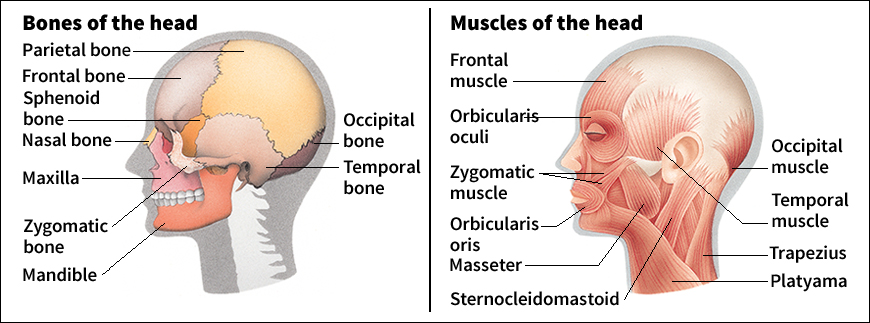Head is the part of the body that holds the brain, the mouth, and the chief sense organs—the eyes, ears, and nose. Its location depends on where the sense organs can best pick up messages from the environment.

In human beings and in other animals that walk on two legs, the head is at the top of the body. In four-legged animals, the head is at the front. Some animals, such as starfish, have no head. These animals receive sensory information from various parts of the body.
The skeleton of the head is called the skull. The skull is usually composed of bone. In some animals, such as the shark, it is made of cartilage (see Cartilage). The occipital bone forms the back of the skull. This bone rests on the vertebral column (backbone), forming a joint on which the head moves. The skin that covers the top and back of the head is called the scalp.
A system of muscles and tendons connects the head to the vertebral column, the clavicle (collarbone), the sternum (breastbone), and the scapula (shoulder blade). These muscles and tendons control the movement of the head. Muscles in the head are important in the processes of chewing and swallowing. They are responsible for facial expressions, such as smiling or frowning.

At birth, the head is large in relation to the rest of the body. It measures about a fourth of the body length. By adulthood, it is only about an eighth of the body length. A larger skull does not necessarily mean greater intelligence.
